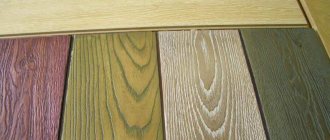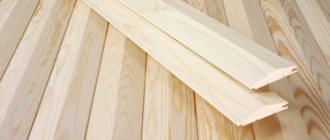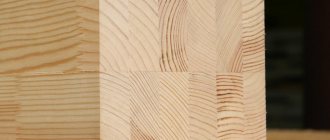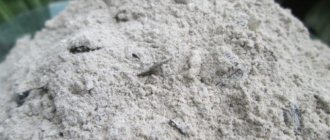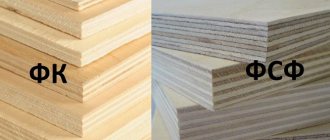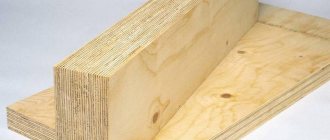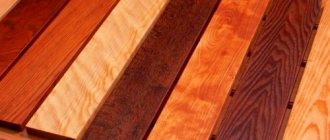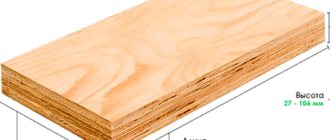There are wooden objects in any home. This could be furniture, window frames, parquet, tools. Over time, the quality of the material deteriorates and the appearance ceases to be attractive. To restore beauty and shine, it is necessary to apply a protective and restorative coating. The ideal result can be achieved through wax. The best manufacturers have filled the market with popular models for every taste. The product differs in functionality, characteristics, degree of gloss, and area of application.
Types of natural wax
The properties and effectiveness of wax products vary depending on the type and origin of the components of the composition, as well as the presence of additional ingredients in it.
- Soft wax penetrates deeper than others, but has the weakest protective properties.
- It melts under the influence of heat and requires constant renewal.
- After treatment with soft wax, wood acquires a characteristic matte shine, but the product does not repel dust.
Hard waxes dry faster after treatment, fill minor scratches, and provide protection against mechanical damage. They form a reliable water-repellent coating, protect the surface from contamination and the effects of various coloring liquids (juice, wine, tea).
Benefits of wax formulations
Wax is used in a variety of areas: industry, medicine, cosmetology, household. The main advantage of the natural composition of wax products is its complete safety. It does not contain toxic impurities, so it can be used in any room, including a children's room.
Advantages of waxing wood:
- Strengthening wood fibers;
- Improving the appearance of products;
- Fire resistance – wax is not subject to combustion and does not emit hazardous substances, but at high temperatures the surface treated with wax may become deformed;
- Moisture resistance - effectively repels steam and water droplets, preventing wood from getting wet and the development of mold and mildew.
Thanks to its natural chemical composition, wax is not subject to oxidation, therefore it retains its protective properties for a long time. After treatment with wax, the wood does not change color for many years.
Treating wood with wax creates a hard, yet thin, breathable coating that increases resistance to wear, simplifies maintenance, and prevents rot.
Wax products allow you to give wood shine and pleasant smoothness, highlight its beautiful texture, and make the natural pattern more contrasting.
What types of products are there?
The variety of goods on store shelves is impressive. All popular models produced are divided into three main categories:
| Kinds | Description |
| Liquid | It is considered an ideal option for wood. Penetrates into all hard-to-reach areas. Helps create a uniform protective layer. Repeats the configuration of relief surfaces even in the presence of a complex pattern. Environmentally friendly product. Does not contain harmful components. Smells nice. The dried composition forms a protective film with dust- and water-repellent properties. |
| Solid | In production, natural substances and vegetable oils are used. Features an increased level of adhesion. Restores the integrity of wooden structures and gives them a natural shine. Has great elasticity. Removes scratches and small cracks from view. |
| Color | An ideal option for restoring the original appearance of products, giving shades of naturalness. Improves the condition of elements made of wood, hides existing defects, and creates a uniform surface. The selection of shades comes from the existing palette. |
The products differ not only in characteristics, but also in the method of application. Let's look at each group in more detail.
Liquid
Distinctive features:
- environmental cleanliness;
- complete safety for humans and the environment;
- presence of a pleasant smell;
- makes the base moisture resistant;
- helps to increase the service life of products;
- forms a durable film;
- repels dust and dirt;
- fills cracks and scratches;
- handles threads with high quality.
Application requires a spatula, brush or roller. The tools move in the direction of the grain. The consistency is convenient for application. Fills all hard-to-reach places and relief areas. The main area of use is furniture processing. The application principle is as follows:
- The surface is cleaned and leveled. For manipulations you will need sandpaper or a grinder.
- Liquid material is applied to the base. The master chooses the tools at his own discretion. Much depends on the amount of work. If you have a large base, it is advisable to use a roller. A brush is enough to treat limited space.
- The layer dries well. Subsequent polishing occurs using a soft cotton flap.
Solid
The main characteristics are as follows:
- increased level of adhesion;
- excellent plasticity;
- versatility;
- obtaining high-quality coverage.
Impregnation is performed in the following sequence:
- Tools and materials are being prepared.
- It is advisable to purchase a grinding machine, a piece of soft cloth, and a tin container.
- The base requires preliminary preparation. Unevenness, roughness, dust, and mud stains are removed. Impregnation is applied with a brush. Flaxseed oil is often used. Subsequent drying and polishing takes place. The number of cycles depends on the condition of the surface.
- The next step is processing the items. The composition is placed in a tin container and melted. Using a cloth, it is applied to the wood fibers.
- Drying takes as long as indicated by the manufacturer on the product packaging. Excess is removed if necessary. After drying, wipe the surface with a clean soft cloth. If left in excess, stains may appear. To create the perfect shine, the substance is applied in several layers.
- The final sanding is carried out using a grinder.
Colored
They are considered the best compositions. This wood material can perform the following tasks:
- make the base with the desired shade;
- eliminate minor defects;
- hide cracks and irregularities;
- make the color uniform.
Manipulation with the substance involves the following steps:
- Preliminary preparation of the base: cleaning, sanding.
- Applying colored wax.
- Freezing.
- Removing excess.
- Final sanding.
Differences have also been identified in the number of components, and therefore the products are divided into the following types:
- multicomponent;
- one-component.
The first option belongs to the professional class and is used by experienced craftsmen. The second is quite simple and is often used in everyday life.
Based on the scope of use, the product is produced:
- for outdoor work;
- for interior work.
Its performance characteristics are different. Experts recommend that when purchasing products, you carefully study the instructions provided by the manufacturer. According to buyers, mistakes cannot be made when choosing. Otherwise, you cannot expect a positive result.
Wax mastics
Mastics are made on the basis of natural wax, often containing turpentine, drying oil, rosin, and stearin. Working with mastic will require special experience and skill - processing large areas is quite difficult. In addition, when heated and absorbed into wood, product consumption increases.
Features of application: This mastic must be preheated so that it penetrates more deeply into the structure. After treatment, the surface must be polished.
Application of ready-made products
Reliable, universal quality of wax preparations for the treatment of wooden bases is widely used in furniture and carpentry production.
Finished products based on natural bee raw materials, both foreign and Russian, cover the facades of wooden buildings, internal structures of roofs, walls and floors.
Furniture coated with a wax composition looks noble and can last for many decades.
Waxes with oils
To provide the tree with the most reliable protection, it is impregnated with oil before applying wax. Professional formulations can significantly simplify the processing process.
For example, products from OSMO contain oils and waxes, so they retain all the properties of a natural product:
- Penetrates well into the wood structure and provides deep protection;
- Even after damage to the protective layer, moisture penetration inside is limited;
- Preserves the elasticity of wood and reduces the risk of drying out;
- Prevents the development of mold and pathogens;
- Protect the tree from waterlogging.
In addition to vegetable oils and waxes, the composition includes water-repellent additives. Processing allows you to enhance the natural color of wood or give it a light shade with the addition of pigments.
Waxing technology
Waxes with oils are easy to use: they do not need to be heated in a water bath or diluted.
However, the wood must be prepared before application.
- First, the surface to be treated is sanded, moving along the wood fibers, using sandpaper with a grain size of 120-150.
- After processing, it is necessary to thoroughly clean the product from wood dust.
- The wax is applied in a fairly thin layer: for this it is convenient to use a flat and hard brush. It is better to choose a tool with natural bristles. The main task is uniform distribution of the composition.
- During the application process, remove excess and ensure that each area is well saturated with the product.
- After the first layer has completely dried, apply the second.
OSMO waxes, unlike oil-free waxes, do not require subsequent polishing. In addition, they do not form a characteristic coating on the surface.
In conclusion
Every day, throughout our lives, we subject things to tests - touches, impacts, placing them in the scorching sun or a damp terrace. Often, thanks to a decorative coating, it is possible to preserve/restore furniture, decorative elements or objects of art for a long time.
If you want to get super gloss on your furniture, the video in this article will reveal all the secrets of this process.
Wood, as one of the most popular materials for the manufacture of furniture, requires a special finishing that will emphasize its natural beauty and extend its service life .
This process is called polishing. Of course, it is difficult to perform , takes a lot of time, and all actions must be carried out very carefully. Despite the difficulties, polishing wood allows you to create a glossy surface , the main thing is to know the subtleties of the process.
Features of caring for waxed wood
If the wood is treated with waxes without additional additives and oils, it will require fairly careful handling. Over time, such a coating inevitably wears off; it is often damaged during wet cleaning.
- Wax-oil coatings last as long as possible. The surface treated in this way is resistant to wear and mechanical damage, and can easily withstand cleaning using aggressive agents.
- Wooden floors and furniture require maintenance using con. With it you can delicately clean the surface of accumulated dirt, stains from drinks and food. At the same time, the product does not disturb the wax coating and does not wash off the oil.
To improve the appearance of a tarnished floor, it is recommended to use a special oil-wax product “Pflege-Oil”. Thanks to it, it is possible to do without a complete replacement of the coating and significantly extend the life of the floor.
Surfaces that have been coated with OSMO's colorless oil-wax composition are easy to renew. Tarnished wood can be treated with the same product again without removing the old layer and sanding the surface. OSMO compositions are suitable for both complete and partial restoration of wooden flooring.
How to choose products
Which product is best to buy depends on many factors. The main selection criterion is the operating conditions of wooden structures. If we are talking about flooring or furniture products, then you need to give preference to models for interior work. Sometimes you have to wax products that are constantly or temporarily in the fresh air, exposed to rain and snow, wind and direct sunlight. Then experts advise paying attention to products intended for outdoor use. This type of coating is heat-resistant, will withstand any bad weather, and has increased UV protection.
It is not difficult to determine where to buy products. You can visit a specialized retail outlet. There, a professional manager will introduce you to a wide range of domestic and foreign-made goods, tell you about new products being produced, tell you what they cost, help you decide on the final option, and calculate the required volume of products.
You can order products online in an online store, while saving a little on the price. However, based on a review of user reviews, instead of expensive wax, you can get a budget, low-quality Chinese counterfeit or handicraft product from a careless supplier.

